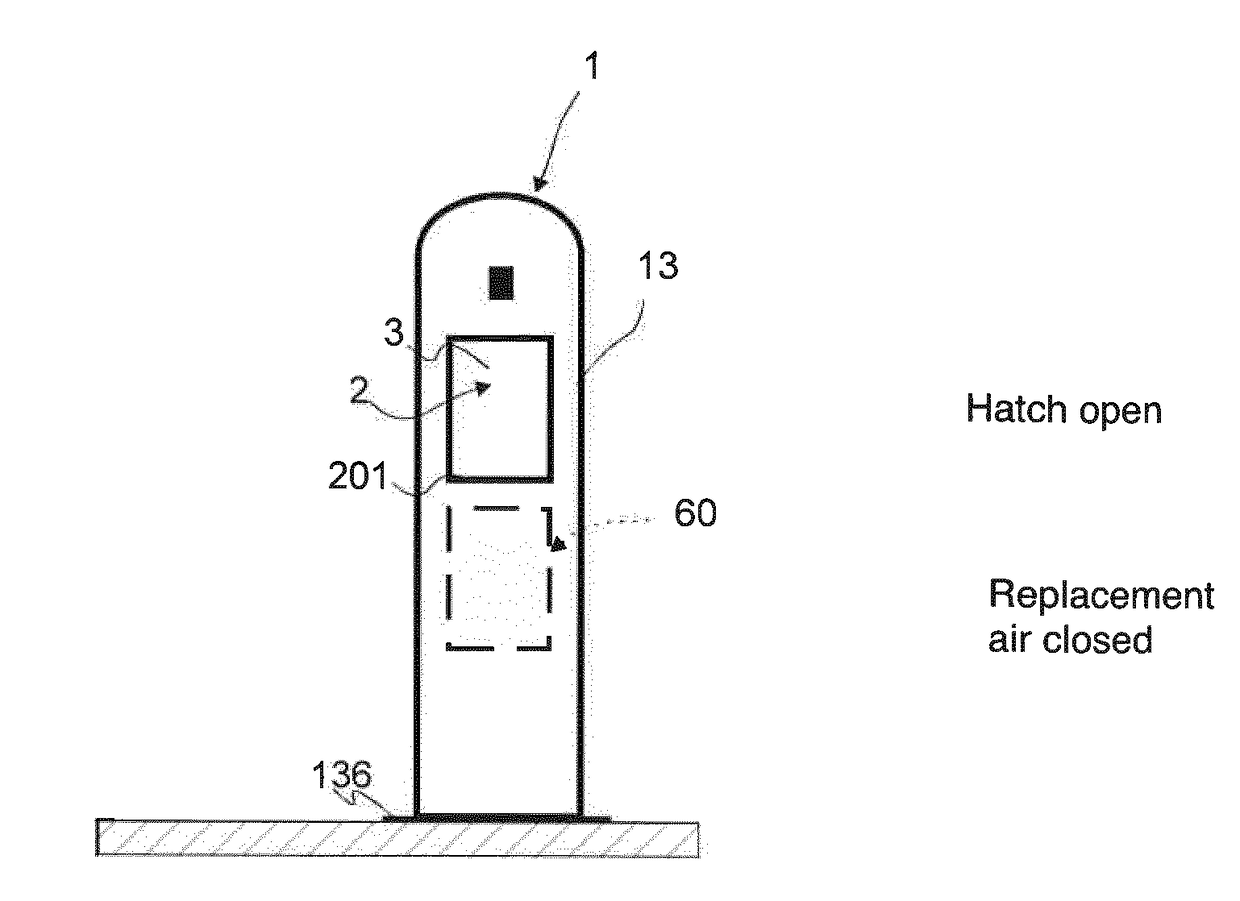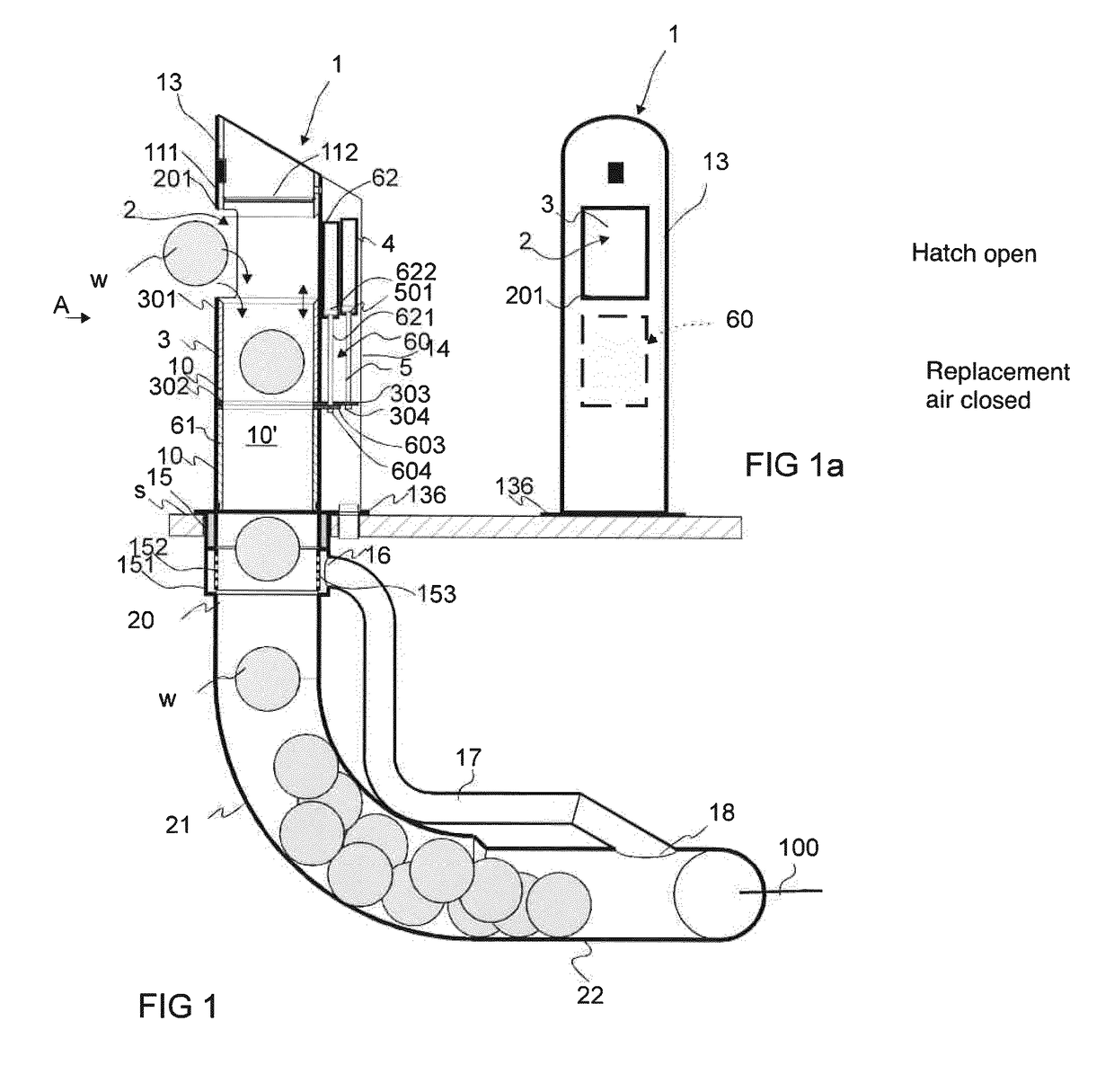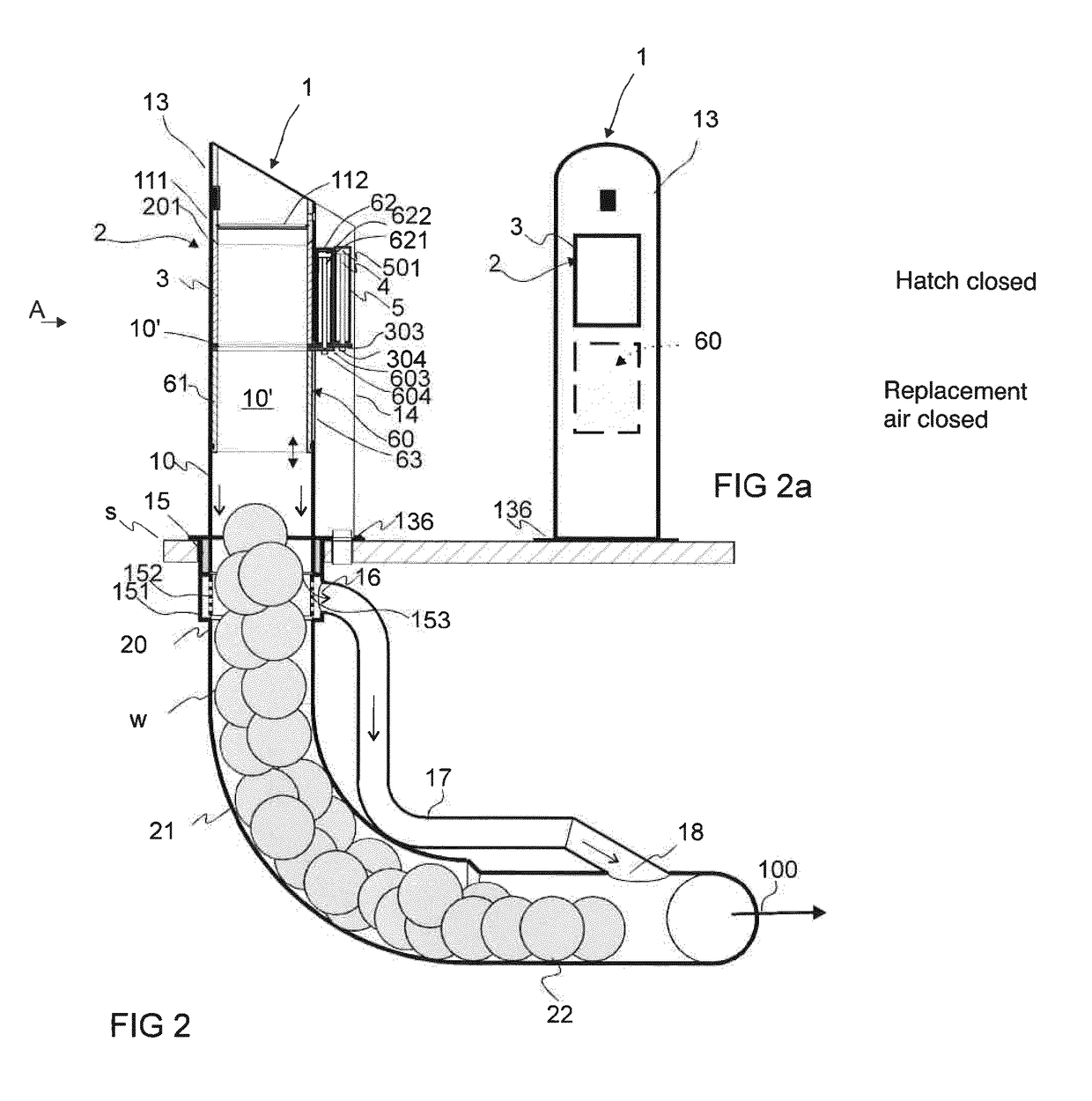Method and apparatus in a pneumatic pipe transport system for material, and a conveying system for wastes
a technology of conveying system and transport system, which is applied in the direction of bulk conveyors, household applications, refuse gathering, etc., can solve the problems of large space requirement of intermediate containers, high excavation costs, and inability to meet the requirements of material transportation, so as to enhance the efficiency of displacing material, prevent material displacement, and efficiently regulate
- Summary
- Abstract
- Description
- Claims
- Application Information
AI Technical Summary
Benefits of technology
Problems solved by technology
Method used
Image
Examples
Embodiment Construction
[0038]FIGS. 1-4 present a simplified view of an apparatus according to the invention in connection with one input point 1 and its intermediate container. The apparatus is intended to connect a pneumatic material conveying system to a material conveying pipe 100 (marked diagrammatically with an arrow at the starting end of the conveying pipe only) and via the conveying pipe to a separating device and to a partial-vacuum generator, such as a vacuum pump or fan, of the pneumatic material conveying system, the suction side of which partial-vacuum generator can be connected to a separating device and via it to conveying piping and onwards via a conveying pipe through channel parts to act in the material space of the input point and of the intermediate container.
[0039]FIGS. 1-4 describe in a simplified manner the operation of the input points. In each input point 1 is an input aperture 2 for feeding material w, such as waste material or recyclable material, into a feed-in container 10 of ...
PUM
 Login to View More
Login to View More Abstract
Description
Claims
Application Information
 Login to View More
Login to View More - R&D
- Intellectual Property
- Life Sciences
- Materials
- Tech Scout
- Unparalleled Data Quality
- Higher Quality Content
- 60% Fewer Hallucinations
Browse by: Latest US Patents, China's latest patents, Technical Efficacy Thesaurus, Application Domain, Technology Topic, Popular Technical Reports.
© 2025 PatSnap. All rights reserved.Legal|Privacy policy|Modern Slavery Act Transparency Statement|Sitemap|About US| Contact US: help@patsnap.com



